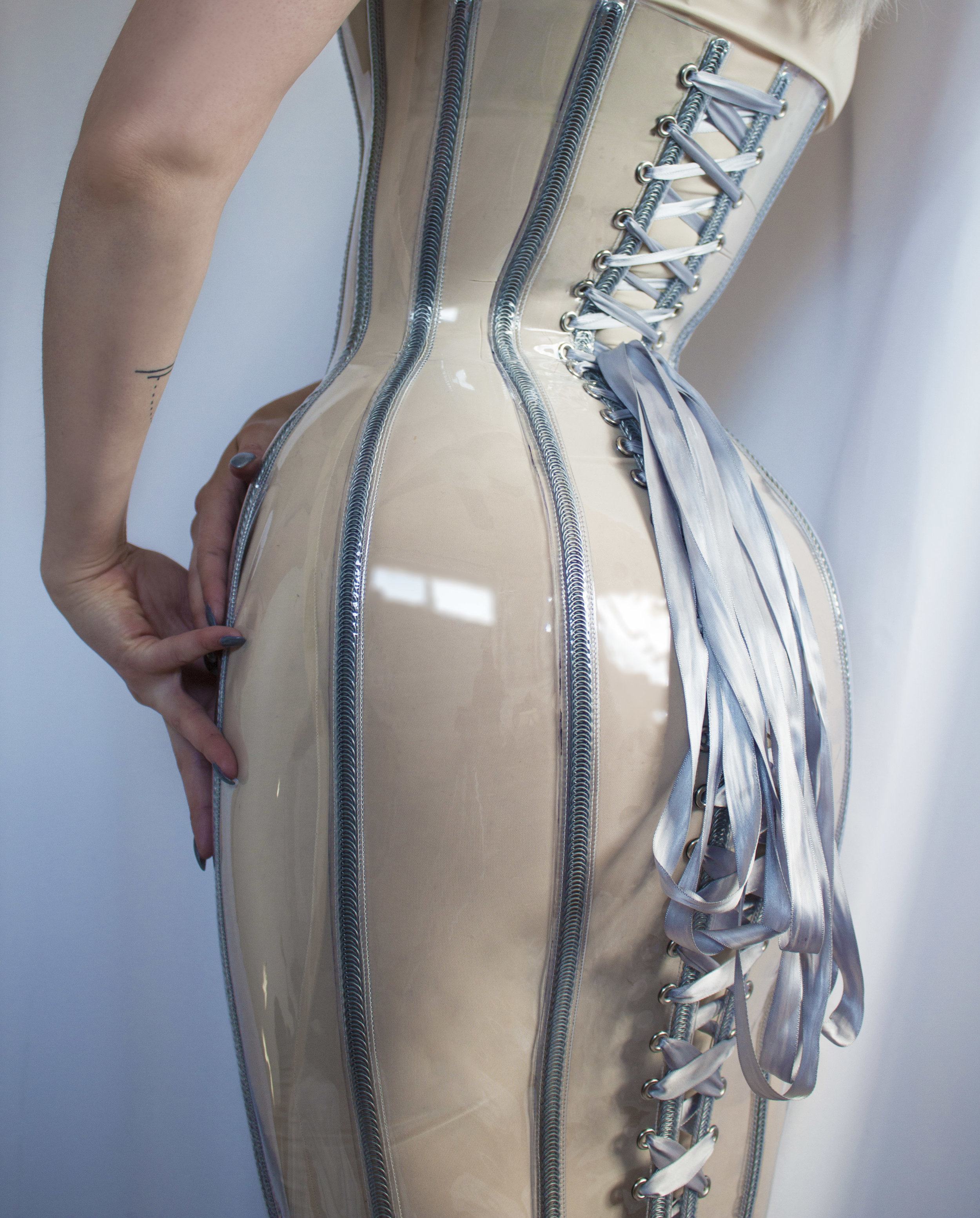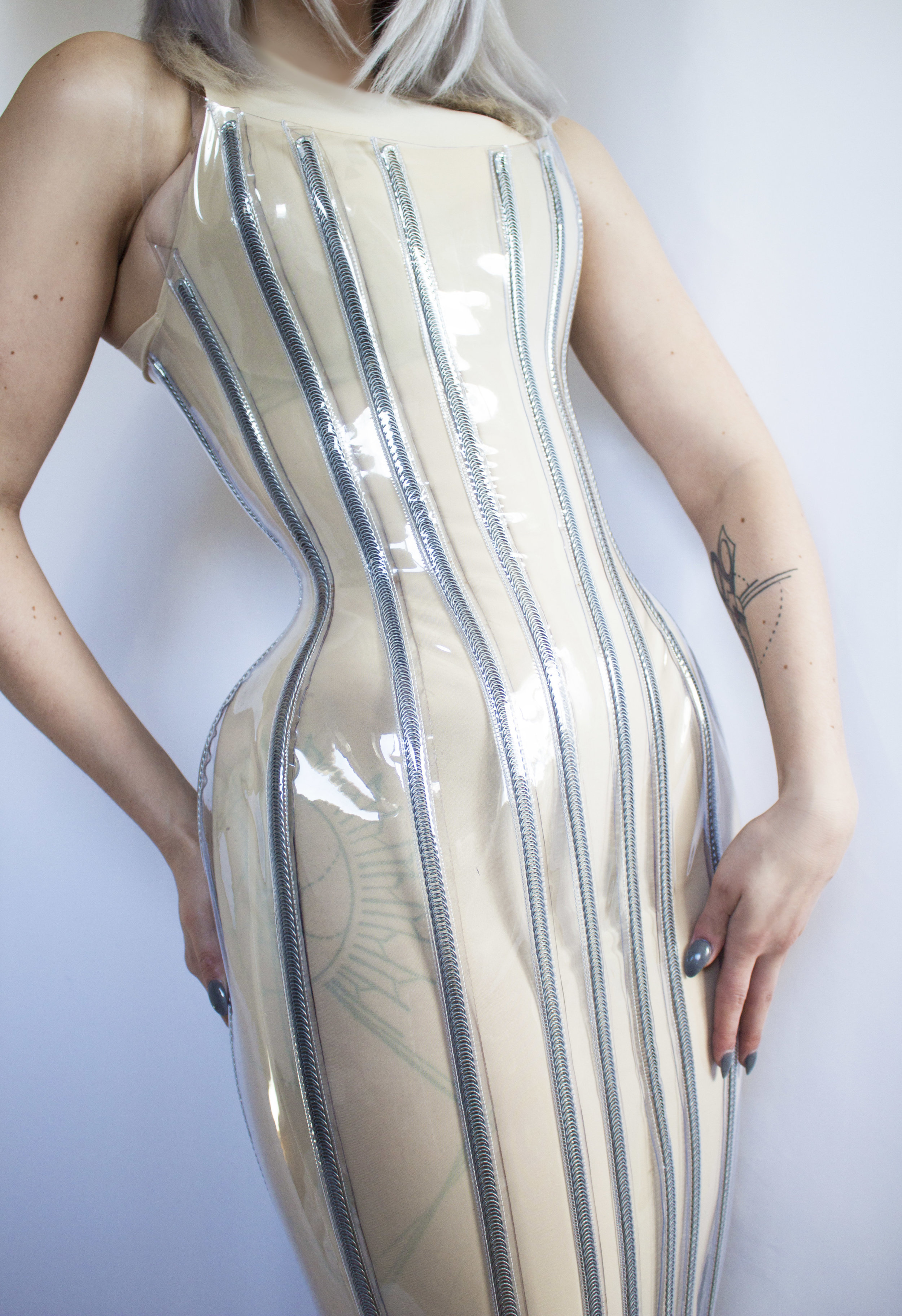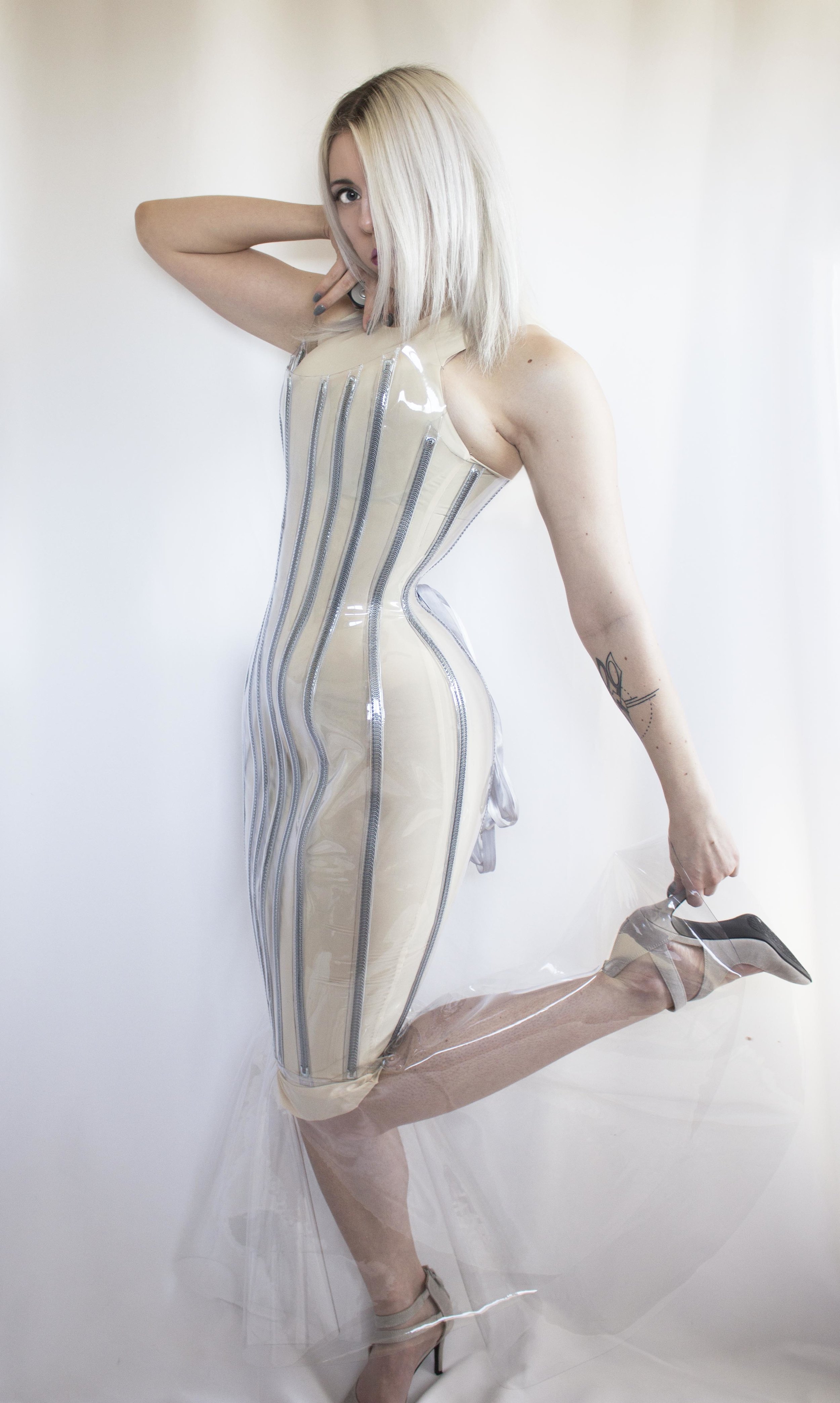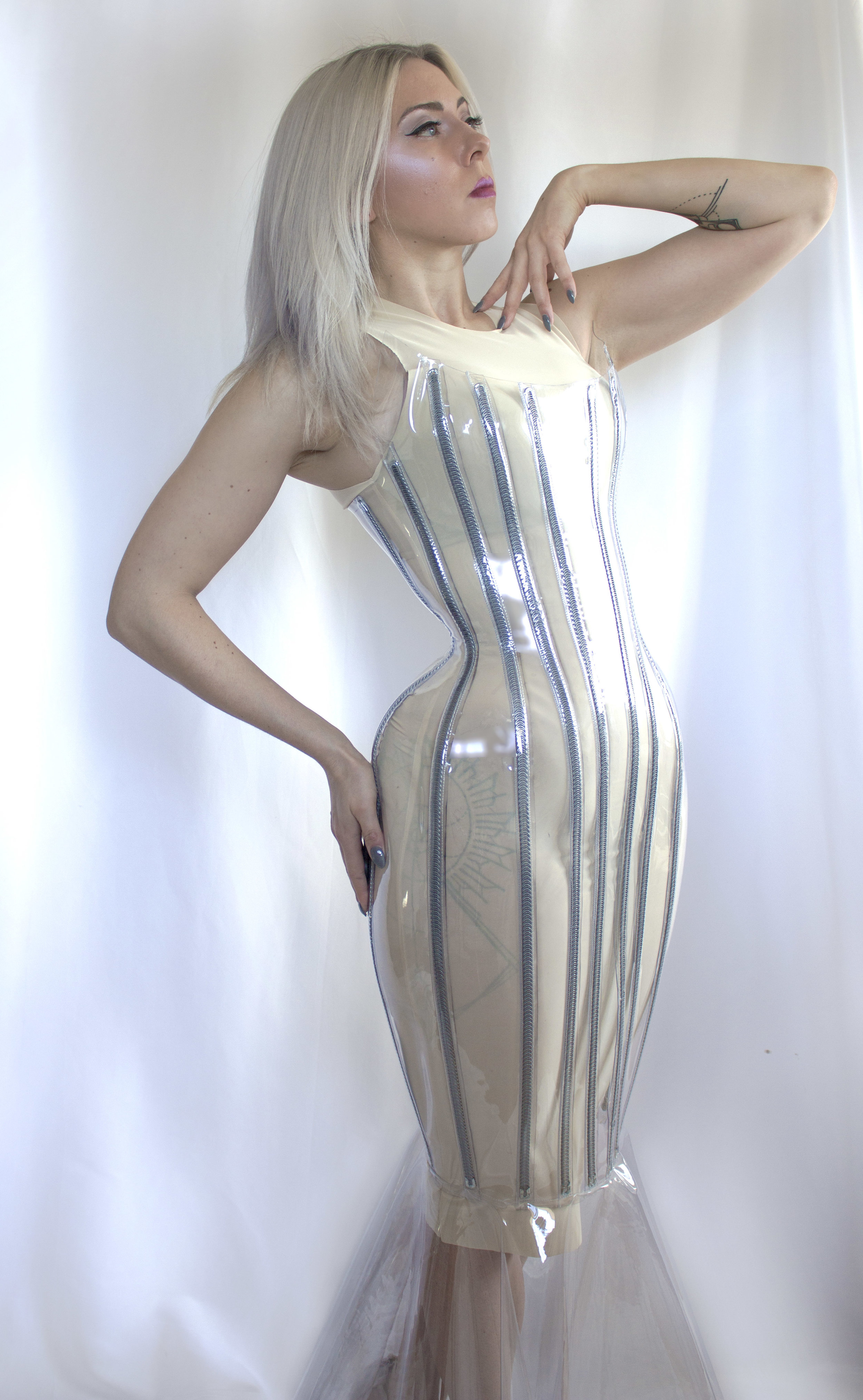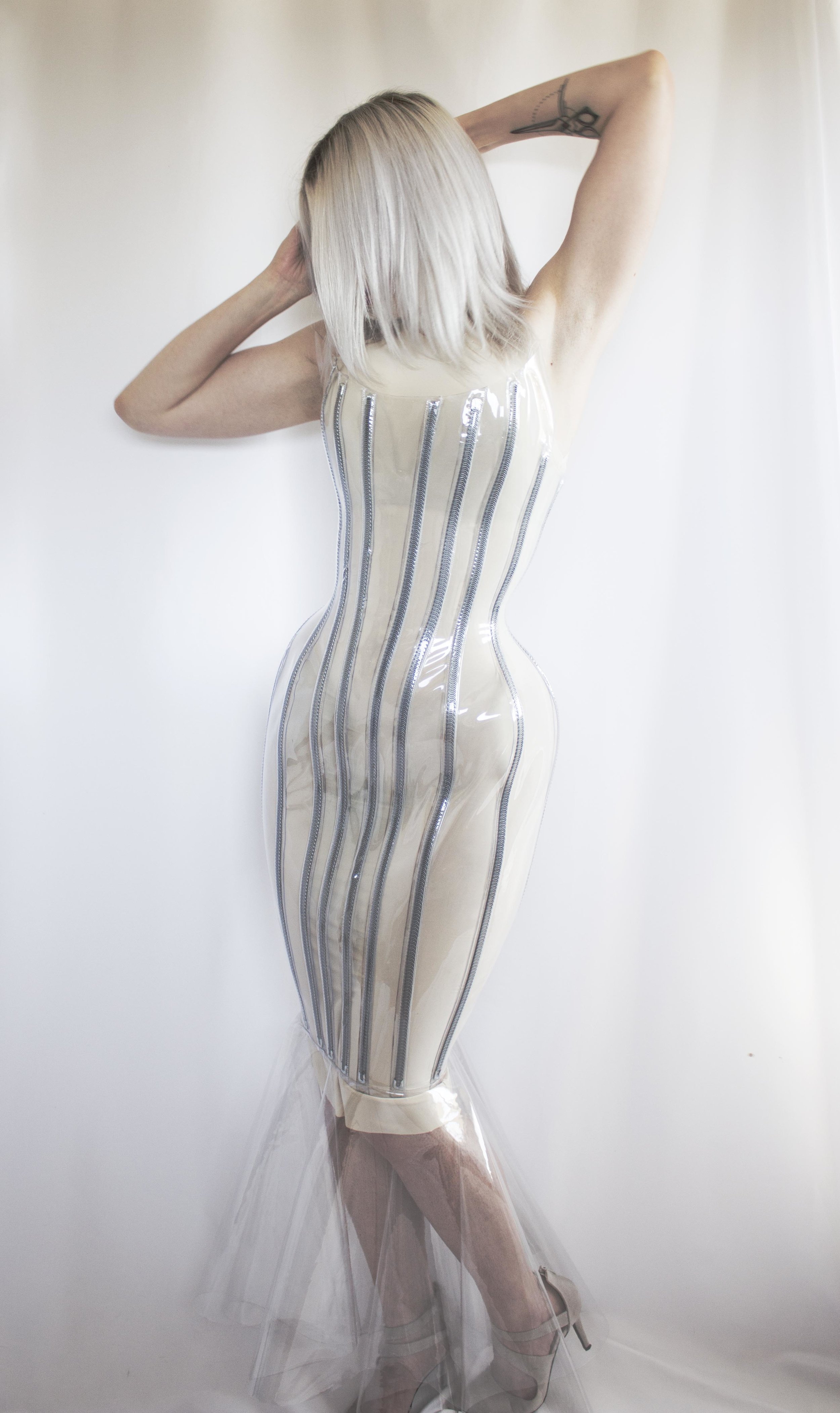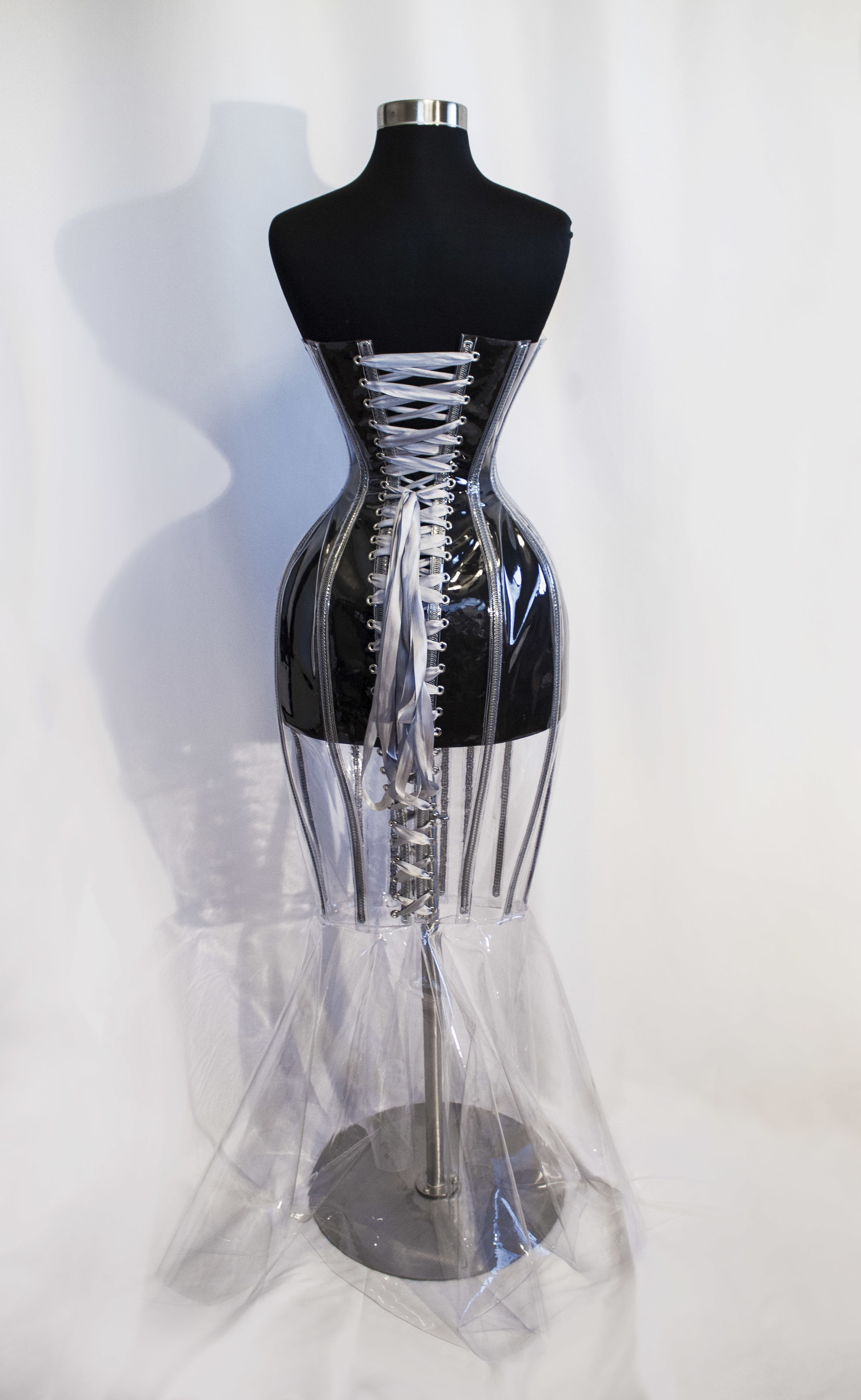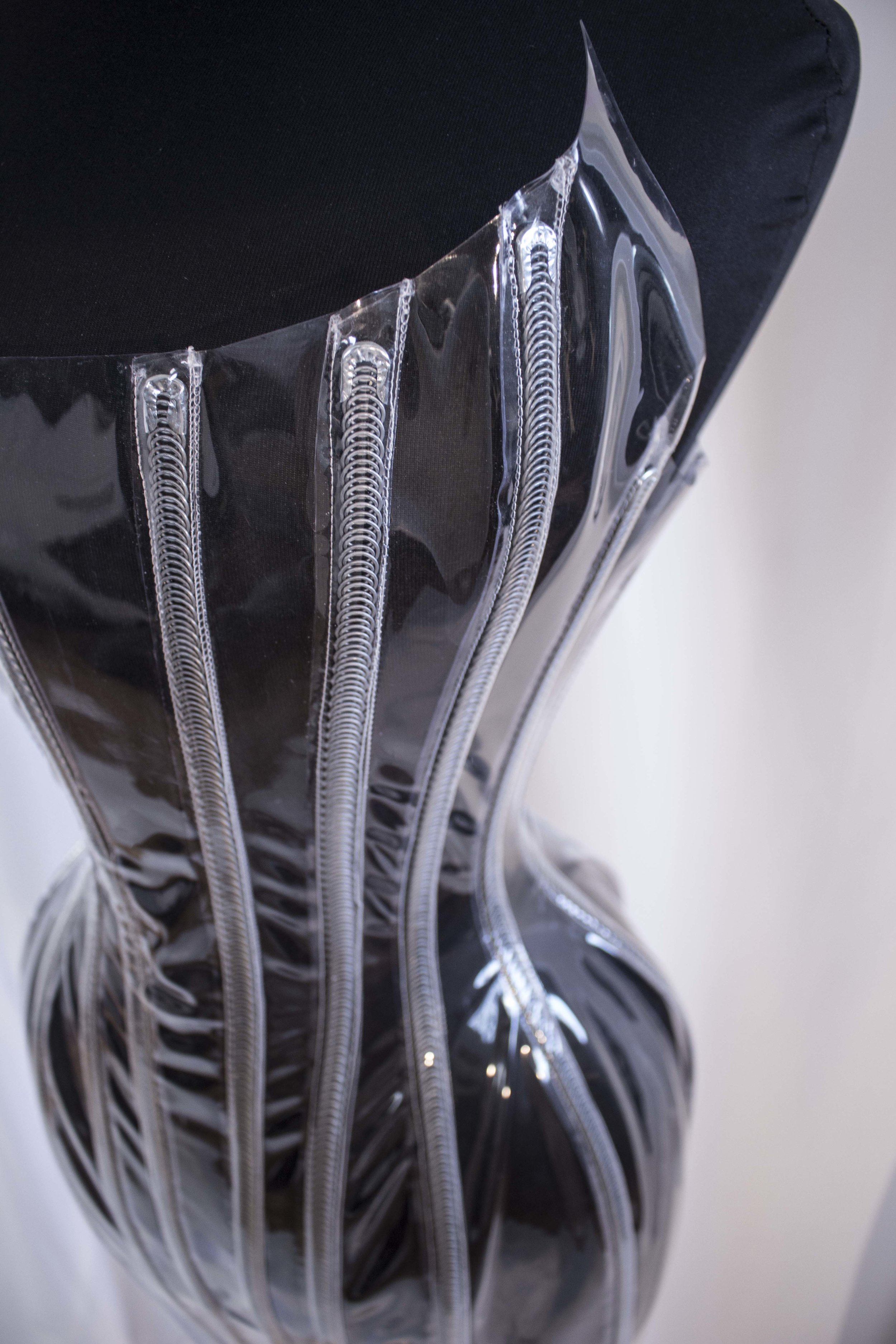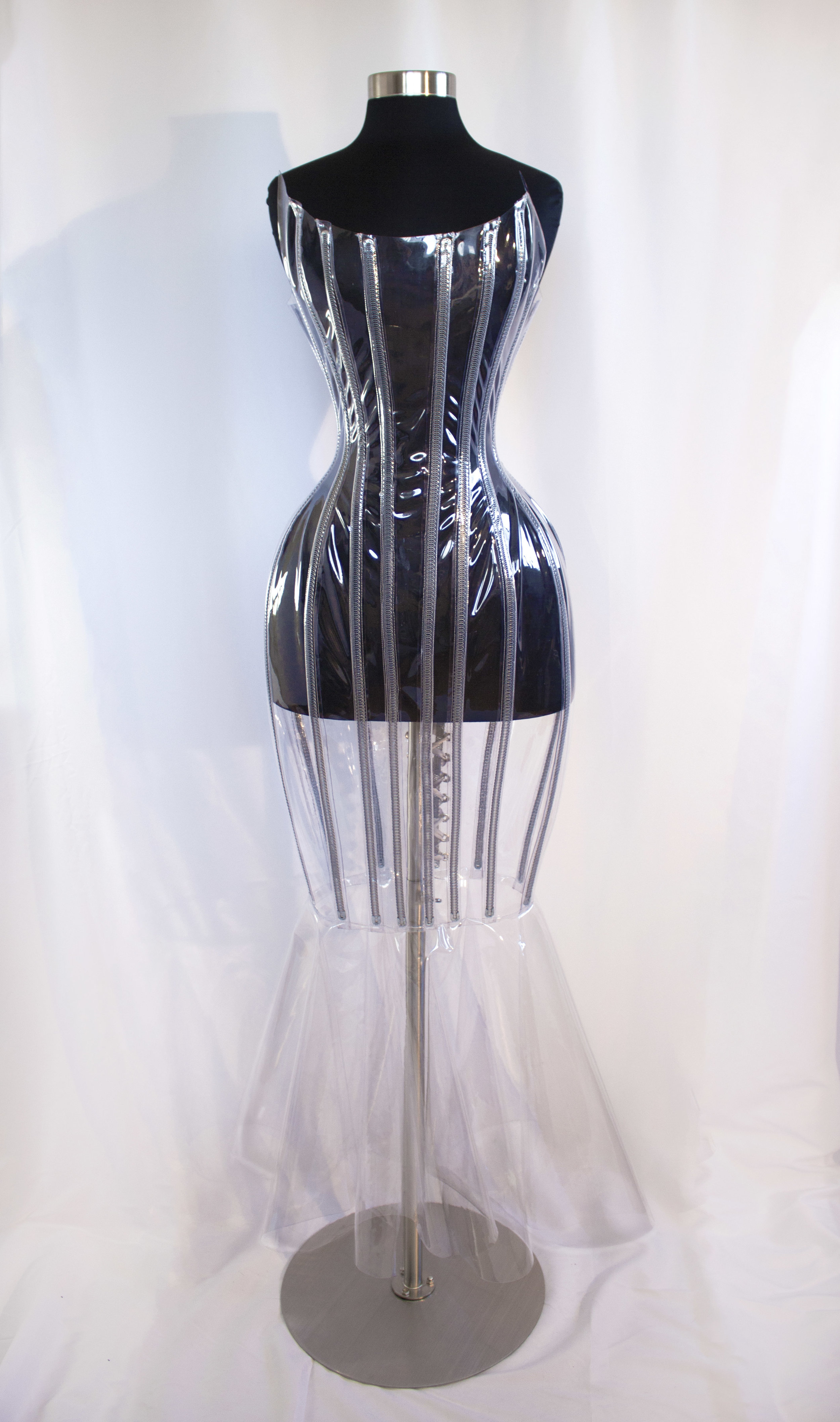Deconstruct - Foundations Revealed Contest 2019
First and Foremost…
Before you read on, I highly recommend you take a look at all of the glorious entries in this year’s Foundations Revealed competition. With the theme being “architecture”, you will absolutely not be disappointed. This blog post will still be here when you get back.
If you’re interested in reading my take on the architectural theme of the Foundations Revealed competition, you can also visit my entry here.
The Mentality of creation
This PVC corset dress was less a labor of love, and more a mind-stimulating 3D puzzle with no instructions or clear end goal. That is exactly why this garment became the first one that I have genuinely enjoyed working on for in awhile.
Meanwhile, in creating it, I managed to break all of the rules of proper corset-making. No mock-up, no previous experience with PVC, and my industrial sewing machine was out of service. However, with just a vague concept and only three weeks left until the contest deadline, I dove into this experiment with the hope that my corsetry experience would compensate for a complete lack of planning. I’m still not quite sure how these two aspects balanced out, but I suspect that this being a somewhat last-minute creation actually worked to its advantage
Like many humans, I have a tendency to over-think and even obsess about details that will inevitably be covered up, all because the invisible imperfections will still haunt me. With this entirely transparent PVC material, there was nowhere to hide. Even worse (or better), PVC is a material that does not “self-heal” from needles or pin-pricks, so every little scar was a permanent one. For me, that meant there was no option for ripping out seams or re-trying a stitch. Once the thread passed through the panels, it was there to stay - no looking back. This was both infuriating and a massive relief. As much as some of my wobbly stitches horrified me, I was forced to make peace with them and move on to constructing the remainder of the garment. Those little glitches would become structurally integral, no matter how pretty they actually appeared.
Simply put, when there’s no opportunity to fix your mistakes, it becomes much easier to keep marching forward. Sounds like life advise, doesn’t it?
The Construction
I discussed the materials of construction more eloquently in my Foundations Revealed competition entry, but it bears repeating here, all because of how fantastically simple of a garment it really is.
The entire list of materials used for this corset dress are:
Gauge 20 clear PVC sheeting
Spiral steel bones (all 3/8” wide, except for the 1/2” wide steels at the back closure)
Size 00 nickel-plated grommets
Off-white polyester thread.
That’s it! I’ve never made a corset with such a short list of materials before, which is many ways means I can’t blame the products I’m working with for any frustrations in the sewing process.
So what about the method of construction? Here’s a quick run-down of how I went about bringing this corset dress into existence:
Step 1: Patterning | The pattern was designed in Adobe Illustrator, based on the couple overbust corset patterns I’ve made for myself in the past, along with fresh body measurements to create the hobble skirt portion of the dress.
Step 1A: Mock-Up | In my original attempt by do this project “right”, I began working on a mock-up. When I realized I had less than 20 days to finish both this and the final project, I shrugged and abandoned the mock-up step altogether (though I still have the fabric cut out and set aside for it…).
Step 3: Cut Out Corset Panels/Pieces | After procuring my PVC sheeting, it was time to transfer the pattern to this material. This step was accomplished by carefully weighting the pattern pieces onto the PVC and lightly outlining the patterns with a permanent marker. Since PVC doesn’t have a “grain” like traditional woven fabrics, the direction in which I cut the material was inconsequential. However, removing the markings with acetone after the PVC was cut was vital, since all of these little blotches would otherwise be visible. If you look closely, you can even see a few spots that I missed in my hurry.
Step 4: Stitch Panels Together | This one is pretty simple, as it’s a logical step in sewing any garment. While there were no “wrong” or “right” sides to these pieces of PVC, I wanted the exposed seam to be on the inside of the garment. Therefore, I stitched the panel pieces together one at a time, with the “right”/outside sides together, using a 2.5mm stitch and 5/8” seam allowance.
Step 5: Top Stitching | Flatten out the corset panels adjacent to one another, and place a top stitch on each seam to keep them smooth.
Step 6: Fill the Seams | Here we deviate from the more standard methods of construction. Every bone in this corset dress was sewn in along with the boning channel itself, somewhat similar to the process of using piping in. Beyond that, I’ll leave the description of this a bit vague, primarily because it’s rather difficult to describe.
Step 7: Clean up the Ends | All of these threads cannot be backstitched, so they must be secured by hand and the far top and bottom edges. I opted to hand-sew these loose threads back around in the holes originally pierced by the adjacent thread stitching. After much tying-off of individual strings, I opted to use a bit of fray-check in order to secure the knots I made.
Step 8: Add Grommets | There are something like 60 grommets in this corset. In the case of this piece, the first round of grommets used were sub-par. However, it was no trouble to pull all of these crummy metal bits out and replace them with higher-quality grommets.
Step 9: Lace Up! | This corset is laced up with 10 yards (9.15 m) of double-sided satin ribbon. It requires an extra set of hands to get into or out of, so don’t be fooled by the fact that a single person can still wiggle around in it.
The Design Concept
If you haven’t followed the link to my Foundations Revealed Competition entry yet, I may as well just share the written concept behind this corset here:
As humans, we have built dwellings and infrastructure for millennia, always innovating our approach to the materials and techniques with which we create and augment our physical spaces. Wood and stone make way for steel and concrete - materials which can be precisely manufactured to withstand the stress and strain that both we and the environment place on them. Fine-tuning these substances has allowed us to build increasingly lofty glass and metal structures that appear weightless despite their enormity.
These structures, standing tall with such straight-forward materials, are what inspire this corset dress. The details of construction are quite literally clear, and the most prominent visual aspect of the piece is the functionality of the materials that comprise it. All ornamentation is rejected, in favor of displaying the qualities of the steel and “glass”. It is not just a matter of revering the elements of the whole, but also the human mastery of those elements individually.
There is value in deconstructing and focusing on the components of any garment or building.
By stripping away the embellishments, we can truly appreciate the structure.
I’m sure I could rattle on ad nauseum about my interpretation of deconstructivism, but that’s for another post. What really allowed me to call this corset dress a “deconstructivist” work was that it was so simple, and absolutely stripped of all flourishes. As simple as it was to create, and as straight-forward as it appears both visually and in the form of its construction, this garment was a delightful challenge.
